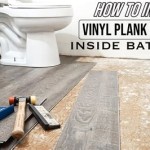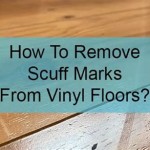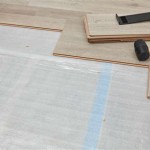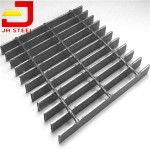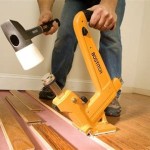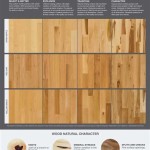How to Remove Linoleum Flooring From Concrete Slab
Removing linoleum flooring from a concrete slab can be a challenging undertaking, often requiring patience and the right techniques. The difficulty stems from the strong adhesive typically used to bond the linoleum to the concrete, which can create a tenacious connection. This article provides a comprehensive guide on how to remove linoleum flooring from a concrete slab effectively, focusing on methods that minimize damage to the concrete itself.
Before commencing the removal process, it is essential to gather the necessary tools and materials. These typically include a utility knife, a heat gun or steamer, a floor scraper, a putty knife, a hammer, a pry bar, safety glasses, gloves, and a dust mask. Depending on the specific adhesive used, a chemical adhesive remover might also be required. Proper ventilation of the work area is paramount, especially when using heat or chemical solvents.
The initial step involves preparing the area by removing any furniture or obstructions. Thoroughly clean the linoleum surface to remove dirt, debris, and any loose particles. This will allow the heat or steam to penetrate more effectively. Consider testing a small, inconspicuous area first to assess the linoleum's response to the chosen removal method. This can help determine the most efficient approach and prevent unexpected issues.
Softening the Adhesive: Heat Application
One of the most common and often effective methods for removing linoleum from concrete is to soften the adhesive using heat. This can be accomplished with a heat gun or a steamer. A heat gun should be used with caution, as excessive heat can damage the linoleum or the concrete beneath. Hold the heat gun a few inches away from the surface and move it slowly and evenly across a small section of the linoleum. The goal is to soften the adhesive, not to burn the material.
Alternatively, a steamer can be used to introduce moisture and heat simultaneously, which can be particularly effective on older or more brittle linoleum. Direct the steamer nozzle onto a section of the linoleum for a few seconds, allowing the steam to penetrate the material and loosen the adhesive. In both cases, as the adhesive softens, use a floor scraper or putty knife to carefully lift and remove the linoleum. Work in small sections to maintain control and prevent tearing.
The key to successful heat application is to work methodically and avoid rushing the process. If the linoleum resists lifting easily, apply more heat or steam until the adhesive softens sufficiently. Be mindful of the potential for burns when using a heat gun and always wear appropriate protective gear. Regular pauses to allow for ventilation can also prevent the buildup of fumes or excessive heat in the work area.
When using a heat gun, it is crucial to keep the nozzle moving to prevent scorching the linoleum or overheating the concrete. Overheating can lead to the release of potentially harmful fumes and can compromise the integrity of the concrete surface. Similarly, when using a steamer, avoid over saturating the area, as excessive moisture can seep into the concrete and cause problems later on. Gradual and controlled application of heat or steam is the safest and most effective approach.
Employing Chemical Adhesive Removers
In some cases, heat alone may not be sufficient to remove the linoleum, particularly if a strong or specialized adhesive was used. In such situations, a chemical adhesive remover may be necessary. It is essential to select an adhesive remover that is specifically designed for use on concrete and compatible with the type of adhesive used to install the linoleum. Always read and follow the manufacturer's instructions carefully before applying any chemical adhesive remover.
Before applying the adhesive remover to the entire floor, test it on a small, inconspicuous area to ensure that it does not damage or discolor the concrete. Apply the remover according to the manufacturer's recommendations, typically by pouring it onto the linoleum and allowing it to sit for a specified period. This dwell time allows the chemical to penetrate the adhesive and weaken its bond with the concrete.
After the recommended dwell time, use a floor scraper or putty knife to carefully lift and remove the linoleum. The softened adhesive should make the removal process significantly easier. If the linoleum still resists removal, apply more adhesive remover and allow it to sit for a longer period. Again, caution should be exercised to avoid over-saturating the concrete with the chemical remover.
Proper ventilation is especially critical when using chemical adhesive removers, as many of these products contain volatile organic compounds (VOCs) that can be harmful if inhaled. Wear a respirator or a dust mask to protect your respiratory system and ensure that the work area is well-ventilated. Dispose of used adhesive remover and removed linoleum properly according to local regulations.
Different types of adhesive removers are available, including solvent-based and water-based options. Solvent-based removers are generally more effective at dissolving stubborn adhesives, but they also tend to have stronger odors and may require more stringent safety precautions. Water-based removers are typically less toxic and have lower odors, but they may not be as effective on some adhesives. Consider the specific adhesive used and the environmental factors when selecting an adhesive remover.
Addressing Stubborn Residue and Final Cleaning
Even after removing the linoleum using heat or chemical solvents, a significant amount of adhesive residue often remains on the concrete slab. This residue needs to be removed to ensure proper adhesion of any new flooring or coating that will be applied. There are several methods for removing stubborn adhesive residue from concrete.
One approach is to use a floor scraper or putty knife to manually scrape off the residue. This can be a time-consuming and labor-intensive process, but it is often effective for removing thick or heavily bonded adhesive. Apply firm and even pressure to the scraper to avoid gouging or damaging the concrete surface. A hammer can be used to gently tap the scraper for added force, but exercise caution to prevent chipping or cracking the concrete.
Another method is to use a chemical adhesive remover specifically designed for removing residue. Apply the remover according to the manufacturer's instructions and allow it to dwell for the recommended time. Then, use a scraper or a stiff-bristled brush to scrub the residue and remove it from the concrete. Repeat the process as needed until the residue is completely removed.
For larger areas or more stubborn residue, a mechanical floor grinder or sander may be necessary. These machines use abrasive pads or discs to grind away the adhesive residue and smooth the concrete surface. When using a floor grinder or sander, it is important to wear appropriate safety gear, including safety glasses, a dust mask, and ear protection. Start with a coarse grit abrasive and gradually move to finer grits to achieve a smooth and even surface.
Once the adhesive residue has been removed, thoroughly clean the concrete slab to remove any remaining debris, dust, or chemical residue. Sweep or vacuum the floor to remove loose particles, and then scrub it with a mild detergent and water. Rinse the floor thoroughly with clean water and allow it to dry completely before proceeding with any further flooring installation or coating application.
Inspect the concrete surface for any cracks, holes, or other damage. Repair any imperfections with a concrete patching compound before installing new flooring. This will ensure a smooth and even surface for the new flooring and prevent any potential problems later on. A properly prepared concrete slab is essential for a successful flooring installation and will contribute to the longevity and performance of the new flooring.
In some instances, professional floor removal services might be considered. These services often possess specialized equipment and expertise to remove linoleum and adhesive residue quickly and efficiently, minimizing the risk of damage to the concrete slab. While this option may be more expensive, it can save time and effort, particularly for large or challenging removal projects.

How To Remove Old Vinyl Or Linoleum Flooring Kitchens And Bathrooms

What You Should Know About Removing Old Linoleum Or Vinyl Flooring Hq Longwood Fl

How To Remove Old Vinyl Or Linoleum Flooring Kitchens And Bathrooms

This Is The Easiest Way To Remove Linoleum Glue From Concrete Hometalk

Removal How To Remove Old Vinyl Tiles Home Improvement Stack Exchange

How To Easily Remove Linoleum Houseful Of Handmade

How To Finish Removing Linoleum Adhesive For Tile On Concrete Floor Hometalk

How To Remove Vinyl Flooring Pvc Tiles Rolls From Concrete Slab

How To Remove Vinyl Flooring The Home Depot

Easiest Way Of Removing Linoleum From Concrete
Related Posts

